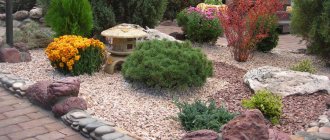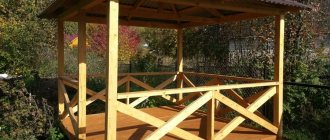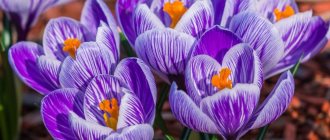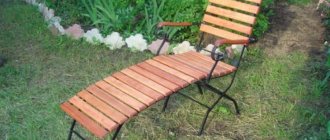Lobelia is an amazingly beautiful plant, whose flowers come in a variety of colors - from white and purple to blue and even violet. Belongs to the Campanula family and can be annual or perennial. Most often in flower beds you can find garden lobelia.
Growing lobelia begins with sowing seeds for seedlings. You can start this stage in December and January, but it is not too late in February. And, despite its unpretentiousness, at the stage of obtaining seedlings, lobelia is quite capricious. But this still does not stop avid flower growers.
The genus Lobelia is represented by 300 species, with about 20 of them having decorative value. The most popular varieties are those with blue and light blue flowers. Purple, lilac and white lobelias are also common.
Rules and timing for picking lobelia seedlings
Lobelia seedlings should be planted when they grow 2-3 true leaves . It is important not to miss the optimal timing of the pick and carry out the event on time. The soil for picking can be used the same; the container can be a common one or individual containers with a diameter of about 5 centimeters (cups, pots).
Scheme for picking lobelia seedlings:
- An hour before the procedure, you need to water the container.
- Fill a new container with soil and water thoroughly.
- Make a planting hole in a new container (the distance between the holes is 3-5 centimeters). For this you can use, for example, a pencil.
- Picking this crop has its own peculiarity - transplantation must be done in bunches . To do this, grab a bush with about five sprouts and transfer it to a new container along with the soil. For convenience, you can use a wooden spatula or spoon. There should be a gap of about 3-5 centimeters between the piles of sprouts.
- Then you need to lightly cover the plant with soil and gently compact it.
- Water the plants in the new location.
Advice! It is recommended to water the seedlings with Energen after the procedure (15 drops per two liters of water). The solution will help the plant to take root better and faster.
After picking, the conditions for caring for lobelia seedlings change slightly. The temperature should be maintained around 16-18 degrees Celsius . For the first 2-3 days after the event, it is necessary to shade the plants for their successful adaptation. Two weeks after the procedure, you can fertilize with a mineral complex fertilizer (the concentration should be 2 times lower than that indicated on the package).
Flower varieties
Lobelia comes in several types.
Dwarf
The plant branches heavily, reaches a height of 20 cm. The flowers are small, about 2 cm. The colors are blue, white, purple, pink. This variety, in turn, is divided into two subspecies:
- ampelous;
- ordinary.
The flower adapts perfectly to different climatic conditions, is able to grow and develop equally actively, both in the shade and in a sunny area.
The only important thing for him is that the soil is always moist.
Compact
This variety is in great demand because it can be grown not only in the garden, but also at home, on the balcony. Another compact lobelia is often used to decorate flower beds. It grows no more than 15 cm in height.
It is characterized by abundant and long flowering, which is also a huge plus. The color of the flowers is predominantly blue.
Erect
This variety is distinguished by a straight stem and a height of up to 75 cm. Lobelia of this variety prefers high humidity. For this reason, in wild places, she likes to be located next to bodies of water and wetlands.
Flower color is mostly red
Ampelnaya
This type of plant is characterized by the presence of long shoots. It is recommended to use flowers for flower pots and home flower beds. By color there are white, blue with a white eye or heavenly with a white eye.
The variety is quite resistant to temperature changes.
Outdoor care
Lobelia and marigolds in the design of the path
The stages of caring for lobelias are traditional and include regular watering, fertilizing, pruning, and pest and disease control.
Watering
Lobelia is demanding on soil moisture and if there is a lack of moisture, it can stop developing and stop flowering. It must be taken into account that annual species have a shallow root system, and many perennials grow in natural conditions in floodplains, in flooded areas and on dry soil they can die.
During dry periods without natural precipitation, plantings are watered every week at the rate of 10–15 liters of water per 1 square meter. m, distributing water evenly, it is advisable to use sprinkling or drip irrigation.
Feeding
When growing all species, you need to carefully use nitrogenous fertilizers - overfeeding will invariably lead to the development of luxurious green mass - stems and leaves to the detriment of flowering.
The first fertilizing is carried out 14 days after planting the seedlings; for this purpose, complex soluble fertilizers with equal contents of nitrogen, phosphorus and potassium are used, for example, liquid “Kristalon for garden flowers” of the Fertika brand.
The following fertilizing is applied every 10–14 days , choosing brands with a high content of phosphorus, potassium and low nitrogen, which will have a good effect on the development of the root system and will give bright, lush flowering. For perennial species , feeding is stopped in September to allow them to go into a dormant state.
Trimming
A special shaping technique is applicable for annual species of columnar and compact shape ; such summer pruning will improve tillering. To do this, the shoots are cut or pinched twice – 10 days after planting and another 2 weeks later.
Some compact varieties (Crystal Pallas, White Lady) do not require additional pruning; a neat habit is genetically determined and with a sunny location, fertilizing and watering, the plants form ideal spherical bushes.
More vigorous species, for example, L. Richard and L. strong grow up to 40 cm in height, forming spreading bushes. To give them a slender columnar shape, pinch the central stem when it reaches the desired height, and then the side shoots. For creeping varieties, it is advisable to remove weak shoots; do not shorten them in length.
To stimulate re-blooming in late summer and early autumn, faded stems of annual species are pruned, the bushes are watered and fed. In good conditions, flowering shoots quickly grow and the plants bloom again, continuing to please the eye until late autumn.
Disease and pest control
Thrips parasitize the plant
Lobelia is rarely attacked by pests, being a poisonous plant, but aphids and thrips can cause significant damage. In addition, flowers are affected by fungal diseases - all kinds of rot and rust.
Aphids are especially harmful in hot spring weather - these pale yellow small insects tightly cling to young shoots, suck out the juice, weakening the plants, and in addition, act as carriers of viruses.
The smallest thrips are difficult to see. You can make sure that the plantings are being attacked by these pests by external signs. Pale green spots appear on the leaves, which gradually turn yellow, the plants are depressed, bloom weakly, and the shoots are deformed. By carefully examining the leaves, you can notice small, dark, very mobile insects and immediately begin processing.
To combat aphids and thrips, use one of the insecticides - Arrivo, Decis, Bi-58 or Fitoverm. Treatment is carried out repeatedly, with an interval of 7 days. For prevention and with a small number of pests, you can use folk remedies - infusions of wormwood or garlic with the addition of soap.
Gray rot affects plants in damp, cold weather. The disease spreads from the base of the stem in the form of dirty gray moldy areas, then spreads to the entire bush. It is more often observed in manured areas with excess nitrogen. Affected plants or their parts are removed, watering is reduced, ventilation is increased, fungicides are applied - Fundazol or Fitosporin-M, you can use the drug XOM.
In warm, damp weather, lobelia can be affected by powdery mildew , which appears as a dry whitish coating on leaves and shoots that quickly dry out and die. To combat the disease, damaged stems and leaves are removed and treated with fungicides (Topaz, Fundazol).
The appearance of small rusty-brown pads or pustules on the back of the leaves indicates another dangerous disease - rust . Infected leaves dry out and fall off, and later the entire bush dies. Affected plants are dug up and destroyed, the rest are treated with fungicides. Rust is often introduced with seedlings, so when purchasing, the leaves are carefully inspected on both sides.
How to care for lobelia seedlings
To grow strong, good and healthy seedlings at home, you need to take care of the plants both before and after the appearance of the entrances. High-quality and complete care is the key to successfully growing lobelia from seeds. The following activities can help you take good care of your seedlings:
- For successful germination, it is necessary to provide the crops with optimal conditions. Immediately after sowing, cover the container with glass, film or a lid . Move to a bright and warm place where the temperature is 20-23 degrees Celsius .
- Be sure to monitor the humidity level. To do this, regularly wipe off any accumulated condensation on the surface of the covering material with a cloth. It is also necessary to ventilate the container - remove the lid, film or glass for 10-20 minutes in the morning and evening. This trick will help avoid the occurrence of dangerous fungal diseases.
By the way! As a rule, with proper care after sowing, the first shoots appear in about a week (plus or minus a few days).
- Watering before emergence is done from a spray bottle . Do not allow the soil to dry out , but also do not add a lot of liquid (again, this is fraught with fungal diseases). The soil with seeds should always be moderately (!!!) moist .
- Seedlings love sunlight. Therefore, both before and after emergence, it should be placed on a sunny windowsill, but the light should be slightly diffused so that the bright rays of the sun do not burn the delicate plants. If the sun's rays are too bright (for example, at noon), then it is better to shade the seedlings with a newspaper or curtain.
- After the emergence of seedlings, the temperature drops - it should be grown at a temperature of 18-20°C.
- For some time after the emergence of seedlings, it is recommended to supplement the plants with phytolamps or LED lamps . The distance between the lamps and plants is 7-10 centimeters. It is also recommended to provide additional lighting during the day in cloudy weather.
- After seedlings appear, it is necessary to gradually remove the covering material . To do this, remove the film, glass or lid in the morning and evening, on the first day for 15 minutes, and then increase the time daily, and then completely open the plants forever.
- Watering after emergence must be done very carefully, otherwise the delicate roots may be damaged. It is most convenient to use a small syringe, syringe or spoon . Be sure to water around the edges of the container; water should not get on the plants . Lobelia seedlings are very moisture-loving, so you need to water as the surface dries slightly, but just as in the situation before the entrances appear, the ground should always be moderately moist, but do not overwater.
- After picking, when the plant grows to four centimeters, it is recommended to pinch the top shoot . Pinching will help achieve lush flowering in the future.
- At all stages of growing lobelia seedlings, it is necessary to protect the plants from drafts and cold coming from the windowsill. If you have a cold window sill, then you need to insulate it with some material (for example, put foam rubber, foil).
- If you find that some plants are sick with blackleg , then you need to immediately remove the seedling from the general plantings and spill the soil with a fungicide solution.
When to sow?
It must be borne in mind that lobelia grows slowly. Growing seedlings takes at least 2-3 months. Only then can the seedlings be sent to a permanent place in the garden. You need to build on this when determining the sowing time.
You can sow from January to April, depending on the region in which the grower lives. Southerners need to plan sowing at the end of January, residents of the Urals - mid-March, Siberians - late March-early April.
They are sent to open ground when the weather is warm outside.
How to prepare planting material for sowing?
Lobelia seeds are very small. Therefore, they need to be pre-mixed with sand when you plan to sow in the soil in order to improve the germination rate. Use purchased soil or soil mixture (soil containing humus, peat, sand). Thanks to this, the seeds are fed with microelements and minerals and germinate quickly.
Granular seeds are available for sale. They are specially prepared to plant them in tablets and cassettes. If you plant seedlings using this method, you can do without picking.
Main problems and ways to solve them
Lobelia is considered a strong, disease-resistant flower. But incorrectly carried out procedures reduce the resistance of the culture. The most common problems when growing:
- Overwatering. Not all lobelias can grow in a humid environment. Watering should be done as needed (dry soil). Leads to the appearance of fungal diseases, blackleg. Solution: remove diseased shoots. Healthy ones should be disinfected together with the soil with biofungicides.
- Lobelias are often attacked by spider mites. Sucking insects try to get inside to absorb the juice. The green mass withers and withers. Solution to the problem: increase the number of waterings, regularly spray with a solution of soap shavings. In case of large damage, insecticides are used.
- The appearance of fungal diseases at the initial stage occurs due to the lack of tillage of the soil and container. In case of severe damage, all seed material will have to be replaced.
Choosing a growing container
As for choosing a container for sowing lobelia, there are no fundamental points here. You can choose almost any planting container that is convenient for you.
For example, you can use a plastic or wooden box, plastic or peat cups, plastic cassettes, peat tablets , various bowls, and homemade containers. But it is best to choose a wide and shallow container for sowing.
Important! Planting containers must have drainage holes (except for peat tablets and cups).
General description with photo
In different classification systems, lobelia is classified either in the Lobeliaceae family of the same name, or in the Kolokolchikov family. In nature and in ornamental gardening, the crop is represented by both annual and perennial varieties. It can take the form of a bush, subshrub or herbaceous plant. For growing in the garden, preference is often given to compact species no more than half a meter in height, although some varieties can grow up to 1.5 m. The plant has fragile shoots that branch from the very base of the bush. The peduncles are short, the buds are small, but the flowering is abundant, in bright colors, mainly in blue-blue tones. The first flowers bloom in June, do not last long, but continuously replacing each other, create the effect of continuous flowering until the onset of autumn cold weather. The fruit is a capsule with very small seeds that remain viable for up to 3 years.
Landing
In the fall, 5–6 kg of humus and 2–3 kg of peat per 1 sq. m. are added to the soil. m, and also, if necessary, to loosen the soil, add sand. The earth is carefully dug up, removing all rhizomatous weeds.
Planting of well-developed seedlings begins in early June, and in warm spring or in the southern regions they are planted earlier - from the second ten days of May. To obtain borders, annual lobelias are placed at intervals of 15–20 cm, spreading forms at intervals of 25–30 cm, large perennials are placed as small groups of 3–5 pieces each or as spectacular tapeworms.
After planting, the seedlings are watered and the soil is mulched. For several days, it is advisable to cover the bushes with jars to maintain leaf turgor.
How to properly sow lobelia for seedlings: main steps
Sowing lobelia seedlings is very simple, but you must remember that the flower seeds are very small and in order not to spill them, you need to handle them carefully. The photo shows small seeds of the crop:
For the rest, step-by-step instructions for planting lobelia will help you:
- The day before the event, fill the planting containers with soil, compact them a little and water them thoroughly.
- Level the soil surface thoroughly.
- Mix the seeds with a small amount of clean river sand (this will help achieve more uniform planting).
- Gently scatter the seeds onto a white sheet of paper that has been previously folded in half (this will help you scatter them over the surface more easily). Or you can use a toothpick (moisten one end with water, pick it up and sweep it into the soil with the other toothpick).
- Now you should sow the seeds evenly over the surface of the soil. Try not to plant too densely by sowing too many seeds in one place.
- After planting, water with a spray bottle using clean water at room temperature.
- Cover the crops with a lid, glass or film and place in a warm and bright place.
By the way! You can sow in rows in a common box, the distance between the furrows is about 2-3 centimeters. This technique will make caring for plants easier in the future.
For faster germination of seedlings, you can spray the soil with a solution of a growth-stimulating drug, for example, Zircon, Epin.
Sowing in the snow
A very convenient way to sow seeds for seedlings is to plant them in the snow. This method has undeniable advantages. Firstly, thanks to the white snow, dark seeds can be easily seen and distributed evenly, which will avoid dense plantings. Secondly, the snow will melt and the seeds themselves will be drawn to the required depth.
The scheme for sowing lobelia seeds on snow is extremely simple: simply spread the snow over the surface of the soil, and scatter the seed on top, as indicated above.
The downside of this method of sowing lobelia is that not everyone always has snow outside their window. But if weather conditions permit, then you can just try planting this way for the sake of experiment.
Planting in peat tablets
Nowadays, flower growers and gardeners are increasingly beginning to use peat tablets for growing seedlings. But this fact should not come as a surprise - the products are extremely convenient, you do not need to waste time choosing a container and preparing the soil.
To sow lobelia seeds in peat tablets, you must first prepare them. Soak them in a container of water for 20-30 minutes. After they are saturated with water and increase in size, you can use them. With this method, it is most convenient to use a toothpick.
Sowing in tea bags (an alternative to peat tablets)
Experienced gardeners practicing various techniques have come up with an interesting way of growing seedlings - in used tea bags (you can also use unused ones, but this is not very economical). The bags imitate peat tablets. This technique has a significant advantage - you practically use a product that is time to throw away, while saving on the purchase of real peat tablets.
Important! Since tea can acidify the soil (and lobelia seedlings do not like this), it is better to pour the tea leaves out of the tea bags. Or don’t pour them out (after all, they contain useful substances), but be sure to add wood ash or dolomite flour to the soil.
Let's look at the scheme for sowing into used tea bags:
- After drinking tea, you need to dry the tea bags.
- Cuts off the top of the bag.
- You need to pour soil; there should be a small distance between the edges of the bag and the ground (as in the photo below).
- Place the bags filled with soil in a bowl so that you can then cover them with film or glass.
- Water and water very carefully.
Despite its practicality, many gardeners are in no hurry to plant lobelia seedlings in tea bags, as they believe that it is too troublesome. Whether to use this technique is up to you. But if you like to find interesting solutions and experiment, then you will definitely like this method!
What varieties of lobelia are grown from seeds?
Thanks to the work of breeders, many varieties have been developed that can be easily grown from seeds at home. The most popular varieties are:
- Riviera White;
- White Lady;
- White Palace;
- Lilac Regatta;
- Regatta Rose;
- Reviera Rose;
- Blue fountain;
- Emperor Willy and others.
The varieties differ from each other in the color of their long-blooming flowers. They look great in flower beds and pots and bloom until late autumn.











